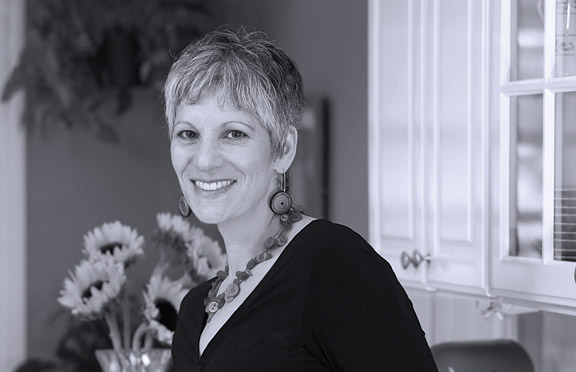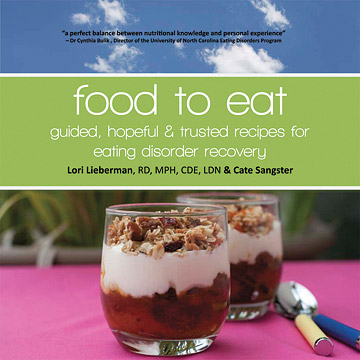Lori Lieberman ’84 is a registered dietician in Massachusetts who
treats patients with eating disorders and writes the blog “Drop It and
Eat.” She recently published Food to Eat: Guided, Hopeful & Trusted Recipes for Eating Disorder Recovery, which she coauthored with one of her readers, Cate Sangster, a recovering anorexic.

LL The whole purpose of this is to make it so that people can approach eating and let go of all the shtick—the over-analyzing, the fears, the misinformation, the rumination about calories and carbs, the many things that make it difficult to move forward. The more I talk to people, the more I realize that anyone who’s ever dieted—anyone who continues to live with misinformation and food rules—would benefit from this.
BAM What kind of misinformation?
LL I often ask my patients to think back to when they were six or eight or ten. Did they count calories? Were they restricting carbs? Yet they had normal weights and followed a normal, healthy growth curve. Somewhere along the line people get into this mode of trusting some magazine or some diet of the day, and they lose their own intuitive sense of what’s safe and acceptable to eat. We get so bombarded with information that we become like a deer in headlights and don’t trust anything.
BAM Your coauthor is recovering from anorexia. Did that influence the book?
LL The process of making the book actually replicated what I go through with patients every day. For instance, one of the first recipes [Cate wanted to include] was miso soup. I said, “You’ve got to be kidding! Miso soup?” Liquids—or large-volume, low-substance foods—give people the illusion of having enough. Most diet plans, including Weight Watchers, say: if you’re hungry, you should drink first. Why should you cover up your hunger with water or coffee or diet soda? You can’t expect to respect your fullness if you can’t respect your hunger.

LL Cate felt there were so many obstacles to eating. Regular cookbooks just don’t get it, and they’re too overwhelming. If we’re going to have recipes, we need to help people do the self-talk that needs to happen in order to feel okay—to help take them through the steps, to do the hand-holding, to make it clear that we understand what they’re going through, we understand what their obstacles are. And also to break the process down, depending on their readiness for a change. You don’t just step in and start sautéing chicken with veggies—even though those ingredients might be fine—because for many people it’s just too much engaging with the food.
BAM You include recipes for cookies. Isn’t that junk food?
LL
If we’re talking about really recovering and changing your relationship
with food, there needs to be a chapter on baked goods. And they have to
be good baked goods—they’re not going to be fat-free! Do we need sugar
in our diet? Do we need white flour? No, those aren’t nutritional
needs. But, boy, we certainly get pleasure from food. Things should
taste good. And they should feel satisfying. Otherwise there’s a
yearning for what you’re not having, and there’s a deprivation that
follows that sets you up for trouble.




